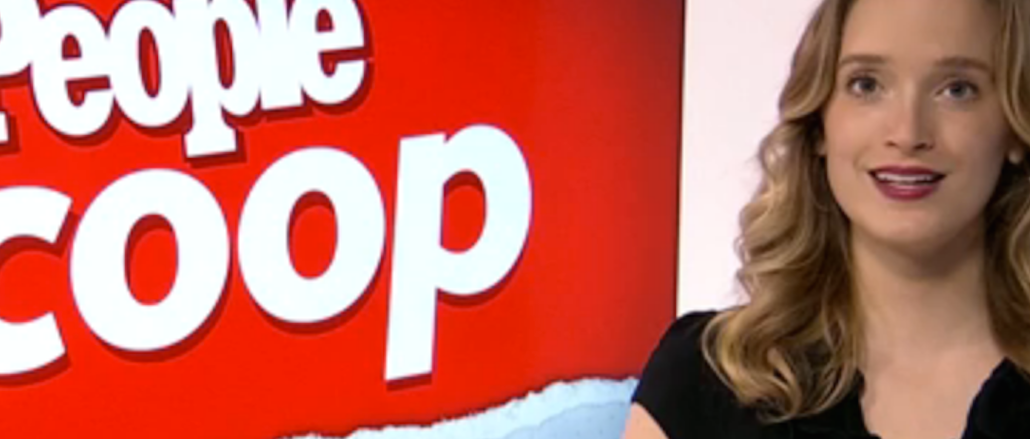
Time Inc. took an unorthodox stance a year ago when it launched The Daily Cut, a hub to house all the video it produces across its many magazine titles. “We want to build our own brand equity,” svp of video J.R. McCabe said in announcing the planned hub.
But a year in, it’s hard to say the Daily Cut, which figured prominently in Time Inc.’s pitch during the NewFronts in May 2014, has gotten the discovery it hoped for. The site hasn’t attracted enough traffic to meet comScore’s minimum reporting standards, which is usually around 50,000 unique visitors. Yesterday, Time Inc. announced that McCabe is leaving the company and that People and Entertainment Weekly president Rich Battista will take over video operations. (Time Inc. declined to comment for this story.)
It’s understandable that publishers would want to have their own avenue to distribute their homegrown video, which for many is key to their growth strategy. Time Inc. CEO Joe Ripp has identified video as among a few areas the company is aggressively pursuing. A 3,000-square-foot video production facility is a centerpiece of the company’s new lower Manhattan offices, and the company cited video as a factor in a 22 percent increase in digital ad revenue to $79 million in the third quarter of 2015 from the year-earlier quarter.
Having consumers watch video on their own sites enables the publisher to keep all the associated ad revenue and promote their other videos and articles. But with publishers like BuzzFeed and Vox Media increasingly distributing their content widely on social platforms, the idea of getting people to start coming to a new video portal seems out of step with viewer behavior.
The Daily Cut, which has a companion mobile/tablet app, launched with more than 1,500 hours and 35,000 videos in a strategy reminiscent of Condé Nast’s dedicated video hub, which launched about six months ahead of the Daily Cut. Like the Scene, the Daily Cut represents the breadth of the parent company’s own magazine brands, which include Sports Illustrated, People and Fortune. The result is jumble of content, from sports profiles to beauty how-to’s and financial advice. Other than Toyota ads on the live show “People Now,” there was a dearth of ads on the site.
“They never promoted the service on their owned sites or any other way,” said a source knowledgable of the company who requested anonymity. “You can’t put something in the app store and expect consumers to just find it.”
It’s no surprise, then, that the Daily Cut isn’t alone in struggling to get off the ground; Condé Nast’s dedicated video hub The Scene’s unique visitors declined 25 percent to 9.9 million in November versus a year ago, according to comScore. Yahoo just pulled the plug on Yahoo Screen, whose traffic plummeted 34 percent to 15 million uniques in November.
The Daily Cut has the potential to draw a lot of audience if it can give audiences access to celebrities or scoops they can’t get elsewhere, though, offered Basil Shadid, head of video at Rational Interaction, a digital creative agency. But today, it’s hard to tell how differentiated the content is, and it’s a hard sell to get people to come to a new site when other publishers like The New York Times are baking video into their articles or sites.
“I don’t think people are constantly adding channels to their browser tab,” he said. “If they start to provide exclusives, it will bring more of the audience that wants that content. “Time owns so many properties, they have access to so many kinds of content others don’t. But they have a lot of work to do.”
Time Inc. isn’t relying solely on the Daily Cut and its magazine sites for video viewership. The company has been using Facebook to distribute video, where the vast majority of the views for some of its biggest sites is taking place, according to Tubular Labs. And in December, Time Inc. added Yahoo, Hulu and Zealot as video distribution partners. Where the site goes next will likely be for Battista to figure out, now that video falls to him.
More in Media

Digiday+ Research: Publishers take their focus off events as revenue dips
The percentage of publishers making money from events hit a low as of the first quarter of this year and, as a result, fewer publishers plan on putting a focus on growing that part of their business.

What platforms, brands and agencies hope to get out of the Possible conference in year 2
Year two of Possible is once again being held in Miami Beach, and it will take place from April 15-17 with 3,000 attendees expected to listen to another 200 or so speakers, including Snap’s Colleen DeCourcy, Uber Ads’ Megan Ramm and UM Worldwide’s Matthew Smith.

AI Briefing: Cloud giants’ AI ambitions create new partnerships — and new competitive concerns
Last week, tech companies like Google, Microsoft and Amazon all announced updates more updates for their cloud and AI efforts





